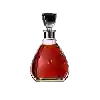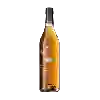
Winery NSCRSardane Banyuls Grand Cru
This wine generally goes well with
Wine flavors and olphactive analysis
On the nose the Sardane Banyuls Grand Cru of Winery NSCR in the region of Languedoc-Roussillon often reveals types of flavors of plum, chocolate or oak and sometimes also flavors of black fruit.
Details and technical informations about Winery NSCR's Sardane Banyuls Grand Cru.
Discover the grape variety: Ekigaïna
Ekigaïna noir is a grape variety that originated in France (Languedoc). It produces a variety of grape specially used for wine making. It is rare to find this grape to eat on our tables. This variety of grape is characterized by medium-sized bunches and small grapes. Ekigaïna noir can be found in several vineyards: South-West, Cognac, Bordeaux, Provence & Corsica, Languedoc & Roussillon, Rhone Valley, Armagnac.
Last vintages of this wine
The best vintages of Sardane Banyuls Grand Cru from Winery NSCR are 2006, 2009
Informations about the Winery NSCR
The Winery NSCR is one of of the world's greatest estates. It offers 47 wines for sale in the of Banyuls to come and discover on site or to buy online.
The wine region of Banyuls
Banyuls wines come from the South-eastern Part of Roussillon, in the south of France, in the lower Pyrenees, a few kilometres from the Spanish border. These naturally Sweet wines are consumed both as an aperitif and as a dessert. They come in a wide range of hues, from GoldenGreen (Banyuls Blanc) to Amber (Banyuls Ambré) to the intense garnet of the standard Banyuls Rouge. Unusually among the natural sweet wines of France, all Banyuls wines are made primarily from Grenache grapes of various colors.
The wine region of Languedoc-Roussillon
Languedoc (formerly Coteaux du Languedoc) is a key appellation used in the Languedoc-Roussillon wine region of southern France. It covers Dry table wines of all three colors (red, white and rosé) from the entire region, but leaves Sweet and Sparkling wines to other more specialized appellations. About 75% of all Languedoc wines are red, with the remaining 25% split roughly down the middle between whites and rosés. The appellation covers most of the Languedoc region and almost a third of all the vineyards in France.
The word of the wine: Thinning out
Operation consisting in eliminating the suckers that grow on the vine stocks.














